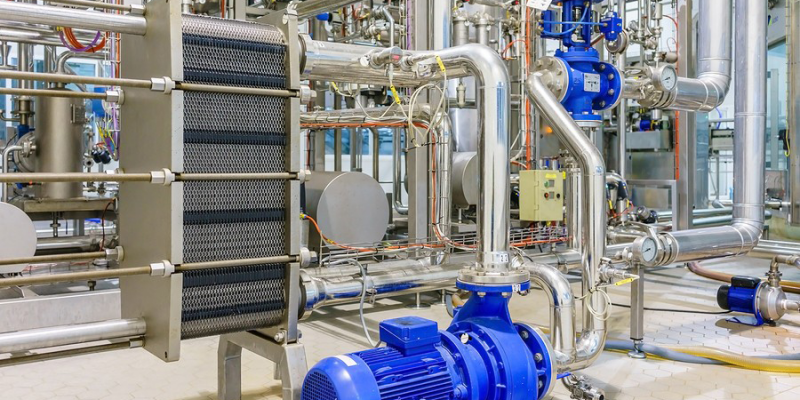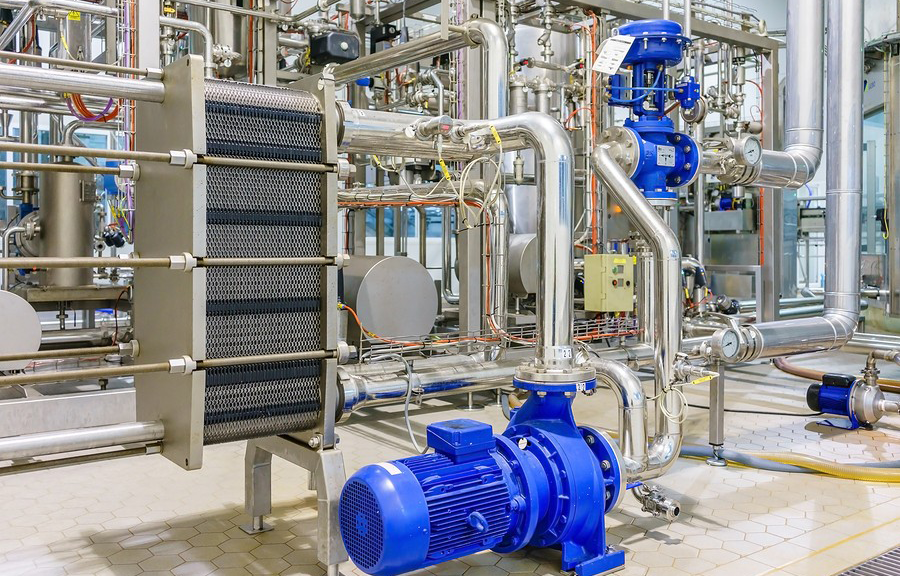
Aluminum Boiler Treatment
In commercial heating and cooling there are many materials available for heat exchangers: copper and copper alloys, stainless steel and aluminum. Let’s talk about the characteristics of aluminum boilers and the specific treatment they require.
Aluminum is easy to cast and it provides increased heat transfer, which means higher efficiency. That’s just one reason aluminum is picked for the application
High Thermal Conductivity
Thermal conductivity is the velocity at which heat passes through the material. Aluminum, as a highly pure metal, is eight times better at thermal conduction than stainless steel. While an aluminum heat exchanger requires thicker walls in a commercial boiler application, it is nonetheless lighter by weight, and has a high ratio of strength to weight. Ultimately, the thickness of the heat exchanger does not interfere with aluminum’s heat transfer advantages.
In blow mold and plastic injection molding operations, aluminum is often the material of choice for the molding operations. More recently, boilers have been manufactured from cast aluminum.
Natural Corrosion Resistance
The corrosion rate of aluminum is relatively high when in contact with fresh water. Aluminum gradually deposits a protective layer of aluminum oxide film after a few weeks, which is highly resistant to acid-generated corrosion and decreases the risk of further oxidation.
However, in boiler and cooling applications, the water which contacts the aluminum heat exchanger is not merely fresh water. And other metals in the system are typically not aluminum. Typically, there is steel and brass and other copper alloys in the system which have different corrosion potential than the aluminum.
For the best corrosion protection, steel and copper generally favor a pH of around 8.5-10. Aluminum corrodes at a pH of greater than 8.5. In fact, some manufacturers of aluminum heat exchangers have specified operating pH ranges far out-side of industry pH ranges, i.e. 4.5 to 8.5. In general, pH values below 4.5 will results in a more general corrosion of aluminum surfaces, while pH values above 8.5 will promote localized pitting. The common pH guidelines referenced for aluminum system water treatment applications is 7.5 to 8.5. Other metals will be more susceptible to corrosion at these levels.
Treating Aluminum Boilers
As you can see, the advantages that aluminum boilers and heat exchangers are often outweighed by the fact that they more difficult to treat than traditional hydronic systems. They have a very narrow window of tolerance for pH, which makes protecting other metals in the system a challenge. Furthermore, any natural oxidation of the aluminum exchanger adds aluminum to the hydronic loop. This aluminum can then drop out of solution and lead to galvanic corrosion, corrosion which is caused by dissimilar metals and their relatively nobility When glycol is in use, the limits are very challenging to balance.
Chemtex and Cast Aluminum Boilers
Please contact Chemtex to learn more about our programs designed specifically to treat cast aluminum boilers and aluminum heat exchangers. We’ll help you understand the essentials of a maintenance program, including operation, water quality, and inhibitor options. These factors will all affect the life expectancy and maintenance requirements of a heating unit and the system in its entirety.




/NQA-ISO-9001-Logo-ANAB.jpg)